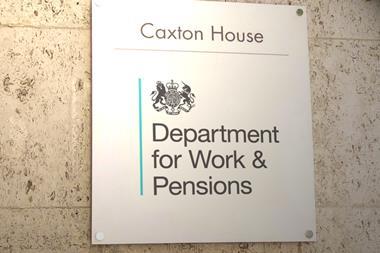Around £100bn (€117bn) of surplus could be returned to sponsors of UK defined benefit (DB) pension schemes over the next 10 years, according to analysis conducted by consultancy Isio.
Traditionally, most DB schemes have targeted one of two long-term outcomes – buyout or self-sufficiency. Self-sufficiency entails a cautious, low-risk approach to investing that only achieves a slower journey to buyout.
However, schemes are now starting to consider run on. Back in July 2023, chancellor of the exchequer Jeremy Hunt announced a number of reforms aimed at increasing investment from pension schemes in UK growth, which included encouraging DB schemes to run on and invest more of their assets in productive finance.
Since then, the government announced plans to consult on whether changes to rules around when DB scheme surpluses can be repaid, including new mechanisms to protect members, could incentivise investment by well-funded schemes in assets with higher returns and reduce the authorised surplus payments charge from 35% to 25% from 6 April 2024.
This consultation was launched in February.
Barnett Waddingham previously estimated that £50bn of surplus could be made available to be returned to sponsors of FTSE350 DB schemes if the Mansion House proposals were to be agreed.
Purposeful run-on framework
Against a backdrop of government support for unlocking value from DB schemes and their surpluses, Isio has launched a purposeful run-on (PRO) framework which sets a target buffer above full buyout funding and once this is reached surplus is gradually shared between the employer and members over the medium to long term.
Isio said that under its PRO framework schemes could return around 17% of their assets to sponsors and members over the course of a decade. If 40% of the circa £1.4trn of UK DB assets are used in this way, that is nearly £100bn could be shared between members and sponsors.
With the current aggregate surplus across the UK’s approximately 5,000 private sector DB schemes estimated at £250bn, Isio said that many schemes are already in a position to start distributing surplus.
It added that this will normally be possible without the overriding legislation to ease surplus distribution that the government is consulting on.
Through Isio’s framework schemes’ assets will be invested to continually replenish surpluses with the expectation of releasing an average of around 2-2.5% of assets per year without taking excessive levels of risk.
Isio said that payments to employers would only be made following an annual assessment showing a surplus on a buyout basis, with the payment being less than the surplus and accompanied by a simultaneous discretionary increase to members’ benefits.
Stewart Hastie, partner at Isio, said that many UK DB schemes now represent an “opportunity rather than a problem to solve”.
This is because the significant recent improvement in funding levels allows trustees and sponsors of the right schemes to invest past full funding on a buyout basis and gradually share emerging surpluses over the medium to long term.
He said: “PRO can be adopted today either as a target destination or by starting to gradually release surplus now for very well-funded schemes. For each scheme careful thought needs to be given to the interaction of funding, size, maturity, covenant, investment risk and balance of powers under the rules.”
Hastie added that early collaborative engagement between employers, trustees and consultants will allow stakeholders to get the most out of their DB schemes.
Read the digital edition of IPE’s latest magazine























No comments yet